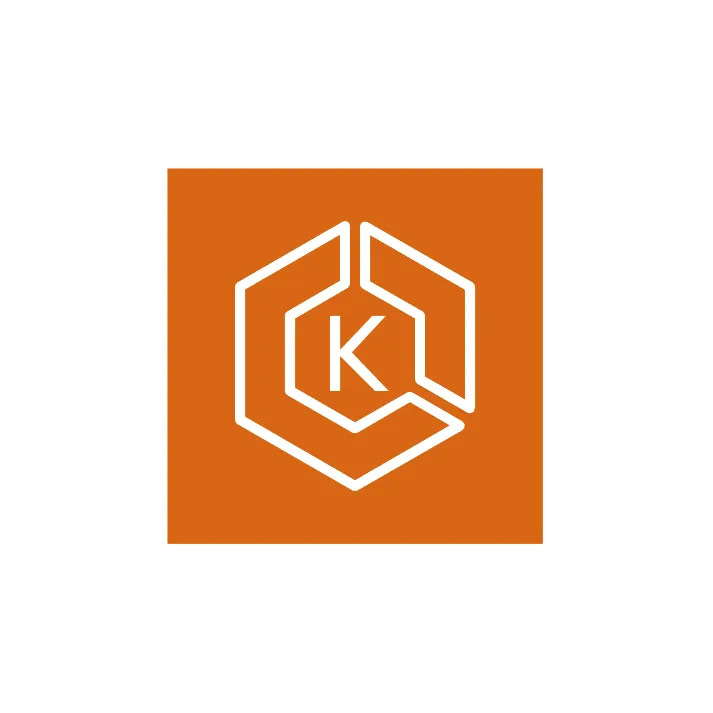AWS Containers – The most important information
Containers are all the rage in the DevOps world, and for a good reason. They offer an efficient way to package code and dependencies for deployment. But once your containers are up and running, you need a way to manage and orchestrate them. This blog post will explore what AWS services you can use to manage and orchestrate your containers. By the end of this post, you should understand how various services support containers in AWS and how you can benefit from this. So let’s get started!
Table of contents
What are containers?
Containers are a type of virtualization that allows you to isolate an application or process from the underlying operating system. This isolation provides several benefits, including improved security, portability, and application performance. Containers are typically used to run web applications or microservices.
Docker is the most popular container platform, and it enables you to package an application or process with all of its dependencies into a single “container.” This makes it easy to deploy and run your application on any compatible host, regardless of the underlying operating system. Containers can also be used for serverless applications, which are event-driven and only run when needed.
Why use containers on AWS?
AWS container services provide a way to package and deploy applications with all of their dependencies, making them easy to move between environments. Containers offer many benefits over traditional virtual machines, including improved security, faster deployment times, and reduced operational costs.
Operational security is one of the key advantages of containers. By isolating applications in containers, you can limit the damage caused by a security breach. Containers also make it easier to deploy security updates, as you can update the base image and redeploy the updated container. This contrasts with traditional virtual machines, which can require significant downtime for security patching.
Containers also offer faster deployment times than virtual machines. This is because containers are typically much smaller than virtual machines, which can be deployed and started up much more quickly. In addition, containers are typically deployed on top of a lightweight operating system, such as Alpine Linux, which further reduces startup times.
Finally, containers can help reduce operational costs. AWS provides a range of services to help you start using containers. For example, Amazon Elastic Container Service (ECS) is a fully managed service that makes it easy to deploy, scale, and manage your container-based applications. ECS handles all the heavy liftings for you, so you don’t have to worry about provisioning servers or to configure networking and security settings.
Containers benefits in AWS
Containers are popular for developing and deploying microservices because they offer several benefits, including improved security, easier management, and portability. In addition, containers can be used to build scalable batch-processing applications and to standardize hybrid application code. They also offer an easy way to migrate applications to the cloud and can improve developers’ productivity. Let’s review all these benefits in more detail.
Build secure microservices
AWS allows you to build and deploy secure, fast, and scalable microservices. With containers, you can break your applications and run them as independent components (microservices). Every microservice package stores your application code and dependencies in a single image, making it easy to move them between environments. In addition, containers isolate your application from other applications on the same host, providing strong security isolation and performance. Finally, containers make it easy to scale your application by adding additional container instances as needed. Using containers, you can build secure, fast, and scalable microservices.
Batch processing
Batch processing is common in many applications, such as image processing, data mining, and log analysis. Batch jobs are typically long-running and resource-intensive, making them well-suited for containers. Containers offer several benefits for batch jobs, including isolation, portability, and scalability:
- Isolation is important for batch jobs because they can often be quite resource-intensive. By isolating batch jobs in containers, you can ensure that they do not impact the performance of other parts of your application.
- Portability is another key benefit of using containers for batch jobs. Packaging up the job and all its dependencies in a container allows you to move it to different platforms or environments. This can be helpful when you need to move a job to a different provider or want to run it on-premises.
- Finally, containers offer scalability for batch jobs. You can easily scale up or down the number of containers you are using based on the needs of the job. This can help you to cost-effectively provide the resources you need to get the job done quickly.
Scale Machine Learning (ML) models
There are many benefits to using containers when working with AWS. One of the primary benefits is that containers can help you scale your Machine Learning (ML) models more effectively. Using containers, you can launch multiple copies of your training data on different machines. This allows you to train your models faster and with greater accuracy. In addition, containers allow you to deploy your models more efficiently. You can launch multiple copies of your model on different machines, reducing the time and resources required for deployment.
Standardize hybrid application code
Containers help you standardize your hybrid application code and improve resource utilization by allowing you to package your application code with only its dependencies rather than making assumptions about the underlying operating system or hardware. This enables you to run the same code, unmodified, on multiple platforms, including Amazon EC2, Amazon ECS, Amazon EKS, AWS Lambda, and your on-premises servers. In addition, containers can improve the density of your applications by sharing a single kernel and isolating processes.
Migration to the cloud
Migrating applications to the cloud is a major undertaking for any organization, and it can be difficult to know where to start. One way to simplify the process is to use containers. Containers allow you to package application code and dependencies together without code changes, making it easy to move applications between environments. In addition, containers are isolated from each other so they can be run on the same host without conflict. This can help to reduce the cost of running applications in the cloud, as you can use fewer resources overall. As a result, containers can provide some benefits for organizations migrating to the cloud.
Developers productivity
Developers are always looking for ways to be more innovative and efficient. One way developers have found to do this is through using containers. Containers allow developers to package their code and all its dependencies into a single, self-contained unit. This makes it much easier to move code from one environment to another and simplifies managing dependencies. Developers can also use containers to run multiple copies of their code in parallel on a single machine. This can lead to significant gains in performance and efficiency. As a result, containers have become an essential tool for many developers working in AWS.
AWS Containers support across AWS services
A broad range of services in AWS supports container workloads. Each of these services offers different benefits and can help you solve your problem. Let’s review container technology support across various services and understand the purpose of each one.
Amazon ECS

Amazon Elastic Container Service (ECS) is a highly scalable, fast container management service that makes it easy to run, stop, and manage Docker containers on a cluster. Amazon ECS eliminates the need for users to install, operate, and scale their cluster management infrastructure. Amazon ECS uses Amazon CloudWatch to monitor clusters and automatically replaces failed containers. Amazon ECS is integrated with AWS Identity and Access Management (IAM) to provide robust security features that AWS customers require. Amazon ECS is available in multiple regions worldwide.
AWS Fargate – AWS Fargate is a serverless compute engine for containers that allows you to run containers on AWS Elastic Container Service (ECS) and AWS Elastic Kubernetes Service (EKS) without provisioning or managing servers. AWS Fargate removes the need to choose server types, instance types, or capacity when you want to run containers. This allows you to focus on building your applications instead of managing infrastructure. The main goal of AWS Fargate is to remove the operational overhead of scaling, patching, securing, and managing servers.
Amazon Elastic Container Registry (ECR) is a fully-managed container registry that makes it easy for developers to store, manage, and deploy Docker container images. ECR supports public and private repositories and provides several features to help you secure and manage your images, including image scanning, lifecycle policies, and IAM roles. With ECR, you can easily create new repositories and push images to them using the Docker CLI. You can also use the AWS Management Console to manage your repositories or integrate ECR with your CI/CD workflow using the AWS SDK or AWS CodePipeline. In addition, ECR supports Docker Compose, making it easy to deploy multi-container applications. Using ECR, you can take advantage of all container benefits without worrying about the underlying infrastructure.
Amazon ECS Anywhere supports container workloads on customer-managed on-premises infrastructure. This gives customers complete control over the management and operation of their infrastructure while still allowing them to use the familiar Amazon ECS APIs and tools. Amazon ECS Anywhere customers can deploy their workloads on-premises, in a hybrid environment, or in multiple AWS Regions. This makes it easy to deploy containerized applications across various environments while maintaining a consistent experience.
Amazon EKS

Amazon Elastic Container Service for Kubernetes (EKS) or Amazon Elastic Kubernetes Service is a managed service that makes it easy to deploy, manage, and scale containerized applications using Kubernetes on Amazon Web Services (AWS). EKS is a managed service on Amazon EKS Anywhere, Amazon EKS in AWS Outposts, and Amazon EKS on Amazon Elastic Compute Cloud (Amazon EC2). With Amazon EKS, you can confidently launch and manage containerized applications knowing that your cluster is running on the industry-leading AWS infrastructure.
Amazon EKS also integrates with other AWS services to provide a complete solution for running your application. For example, you can use Amazon EFS for storage, Amazon CloudWatch for logging and monitoring, IAM for authentication and authorization, and Secrets Manager to store secrets used by your applications. You can also use services such as Amazon Simple Queue Service (SQS), Amazon Kinesis Data Streams, and Amazon DynamoDB to process and Route 53 to route traffic to your containers.
Amazon EKS Anywhere (Amazon Elastic Kubernetes Service Anywhere) is a managed service that makes it easy to deploy, manage, and scale containerized Kubernetes applications on customer-managed infrastructure. With EKS Anywhere, customers can use the same tools and APIs to manage their Amazon EKS clusters and containerized workloads on-premises. EKS Anywhere provides an easy way to get started with Kubernetes workloads at on-premises infrastructure and helps automate the tasks required to keep containerized applications running at scale.
Amazon EC2

Amazon Elastic Compute Cloud (EC2) – By launching containers on EC2 instances, you can take advantage of server-level control and portability while still benefiting from the scalability and flexibility of the cloud. In addition, containers make it easy to isolate your application from other components in your system, providing an additional layer of security.
Amazon EC2 Spot Instances – are a cost-effective way to use unused Amazon EC2 capacity in the cloud. Spot Instances allow you to take advantage of unused Amazon compute capacity in the cloud and can help you significantly reduce your EC2 costs. You can run fault-tolerant workloads for up to 90 percent off with Spot Instances.
Amazon Elastic Beanstalk

Amazon Elastic Beanstalk supports several container-based workloads, making it an ideal platform for hosting your Docker applications. You can use the Elastic Beanstalk console to deploy and manage your Docker containers without needing to install and configure any additional software. Elastic Beanstalk will automatically create and maintain a high-availability environment for your containers, scaling up or down as needed to meet changes in demand. In addition, you can use integrated logging and monitoring tools to keep track of your application’s performance. Amazon Elastic Beanstalk makes it easy to get started with container-based workloads, providing everything you need to deploy and manage your applications at scale.
Amazon Lightsail

Amazon Lightsail is a fixed-price, pay-as-you-go cloud computing service offered by AWS that supports container workloads through Docker containers. You can use Lightsail to launch containers on EC2 instances and then manage them using the Lightsail console or API. Container instances launched on Lightsail are charged at the same hourly rate as other EC2 instances. There is no additional charge for using containers on Lightsail.
AWS Lambda

AWS Lambda provides custom runtimes support, allowing you to use your containers for running Lambda functions. This can be useful if you need to use a different programming language or runtime than what is provided by Lambda. To use a custom runtime, you must create a Lambda layer containing the desired runtime and its dependencies. Once the layer is created, you can specify it when creating a Lambda function. Lambda will then use the custom runtime from the layer when executing the function.
AWS Batch

AWS Batch – Batch processing is common in many workflows, such as generating reports or transcoding videos. Batch processing can be time-consuming and often requires a lot of resources. AWS Batch can help you to automate and manage batch processing jobs. With AWS Batch, you can define job definitions that specify the tasks that need to be performed and the environment in which the job should run. You can also specify how many resources should be allocated to each job, and AWS Batch will provision the necessary resources and scale them automatically as needed.
In addition, AWS Batch integrates with other AWS services, such as Amazon S3 and Amazon DynamoDB, making it easy to build complex workflows. As a result, AWS Batch can help you to save time and resources when performing batch-processing tasks.
AWS Copilot
AWS Copilot is a tool that makes it easy to develop, deploy, and manage containerized workloads on AWS. With Copilot, you can define your application’s architecture using familiar development tools and templates, set up a continuous delivery pipeline to automate builds and deployments, and monitor your application’s performance and resource utilization using built-in dashboards. Copilot also integrates with other services to provide a complete end-to-end solution for deploying containerized workloads on AWS.
For example, you can use Copilot to launch and manage an Amazon ECS cluster and schedule tasks on an Amazon EKS cluster or run containers on Amazon EC2 instances. By using Copilot to manage your containerized workloads on AWS, you can spend less time managing infrastructure and more time building software that differentiates value for your customers.
AWS App Mesh

AWS App Mesh is a service mesh based on the Envoy proxy, making it easy to monitor and control microservices. App Mesh gives you end-to-end visibility into the performance of your services and consistent reliability, even in the most complex distributed applications. With App Mesh, you can be sure that your services are communicating with each other as intended, so you can troubleshoot and fix issues quickly. And because App Mesh is based on the open-source Envoy proxy, it integrates seamlessly with your existing tools and technologies. App Mesh makes it easy to run containerized workloads on AWS by providing built-in support for popular container orchestration frameworks like Amazon ECS and Kubernetes.
You can also use App Mesh with serverless applications built on AWS Lambda. App Mesh gives you a uniform way to monitor and control the traffic flowing to and from your services, so you can be sure that your application is running as intended. And because App Mesh is based on the open-source Envoy proxy, it integrates seamlessly with your existing tools and technologies. Whether you’re using containers or serverless functions, App Mesh makes it easy to run distributed applications on AWS.
AWS Cloud Map

AWS Cloud Map is a web service that makes it easy to discover the endpoints for your container workloads. With AWS Cloud Map, you can create a map of your container workloads and their dependencies and then publish the map to make it available to your containers. AWS Cloud Map automatically updates the map when containers are created or destroyed and can also be configured to update the map when the IP address of a container changes. Using AWS Cloud Map, you can simplify the process of managing your container workloads and make it easier for your containers to discover and connect to the services they need.
AWS App Runner
AWS App Runner is a fully managed service that lets you deploy and run containerized workloads on AWS. With App Runner, you can build and deploy applications using your preferred language and framework without having to provision or manage any infrastructure. App Runner automatically scales your application based on demand, and you only pay for your application’s resources. You can also use App Runner to deploy serverless applications, which are applications that do not require any servers. With App Runner, you can focus on building your application while AWS takes care of all the underlying infrastructure.
App Runner vs. Elastic Beanstalk
The AWS App Runner restricts you to container-based workloads only. It offers minimal control over your resources and operating system to simplify containers’ management. At the same time, many applications may require such controls (e.g., GPU).
On the other hand, AWS Elastic Beanstalk gives you much more control over your resources, including the operating system, but it might be a bit more difficult to configure and maintain it.
AWS App2Container
AWS App2Container is an open-source tool that makes it easy to containerize workloads and migrate them to Amazon EKS or Amazon ECS. The tool analyzes an application’s dependencies and then creates a Dockerfile that can be used to build a container image. This image can be run on any container platform that supports Docker, making it easy to move an application from one environment to another. In addition, AWS App2Container can create reproducible builds, ensuring that every developer has an identical copy of the application for development and testing purposes. As a result, AWS App2Container is a valuable tool for anyone looking to containerize their workloads and migrate them to the cloud.
AWS Proton
AWS Proton is an automated management system that makes deploying and managing containerized and serverless workloads easy. Proton allows you to define your application as a set of components, each with its dependencies and configuration. Proton will then automatically provision and configure the resources needed to run your application, including containers, servers, networking, and storage. Proton also offers built-in monitoring and logging to help you troubleshoot issues with your application. In addition, Proton makes it easy to scale your application by adding or removing components as needed. With AWS Proton, you can focus on your application code and let Proton handle the rest.
AWS IoT Greengrass

AWS IoT Greengrass enables you to deploy and manage containerized workloads on edge devices easily. With Greengrass, you can run containers on your devices without having to provision or manage any infrastructure. simply specify your application’s desired runtime and package dependencies, and Greengrass will pull and run the required Docker images on your devices. Greengrass also makes it easy to update your applications by allowing you to push new versions of your containers to edge devices. You can also roll back to previous versions if needed. In addition, Greengrass provides comprehensive monitoring and logging capabilities for your containerized workloads. This makes it easy to debug and troubleshoot issues with your applications. AWS IoT Greengrass provides a turn-key solution for running containerized workloads on edge devices.
AWS Codebuild

AWS Codebuild is a fully managed build service that compiles source code, runs tests, and produces software packages ready for deployment. CodeBuild scales automatically to meet the demand of your development projects. With CodeBuild, you don’t need to provision, manage, or scale your build servers. CodeBuild supports building Docker containers and non-containerized workloads. Codebuild supports custom-built environments. To use a custom build environment in a CodeBuild project, you build a container image for your platform that contains your build tools, push it to a Docker container registry such as Amazon ECR and reference it in the project configuration.
FAQ
What is containerization in AWS?
Summary
Containers are growing in popularity for a good reason. They offer a fast, efficient way to package code and dependencies for deployment. But once your containers are up and running, you need a way to manage and orchestrate them. AWS offers a variety of services that can help with this. This post explored what services are available and how they can benefit you. If you’re looking for an easy way to get started with containers, AWS is the perfect platform.
